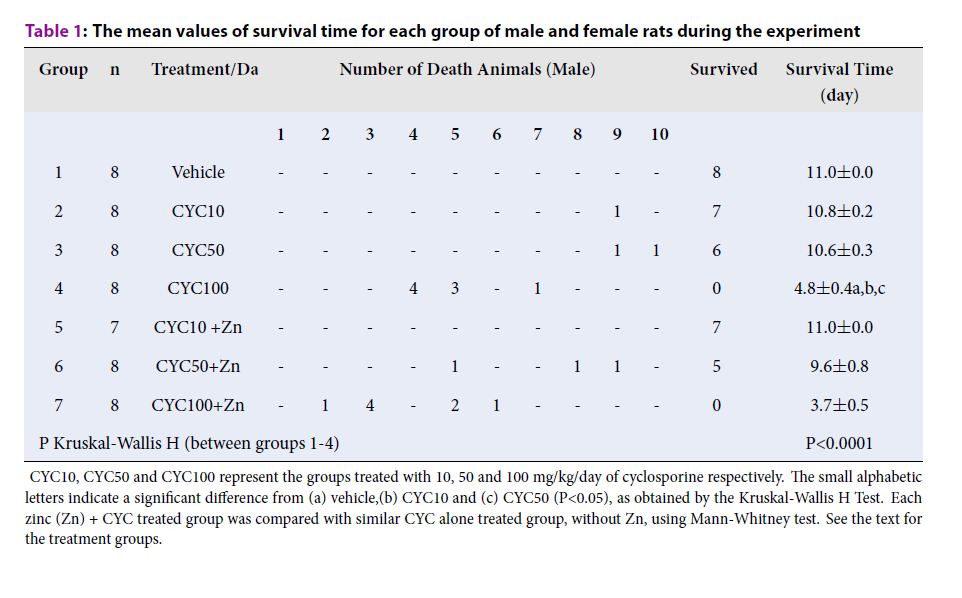Cyclosporine-A induced nephrotoxicity in male and female rats: Is zinc a suitable protective supplement?
DOI:
https://doi.org/10.15419/bmrat.v5i12.507Keywords:
Cyclosporine, Gender, Nephrotoxicity, Renal function, ZincAbstract
Background: Cyclosporine (CYC) is an immunosuppressant drug used widely in kidney transplant patient. The major side effect of CYC is nephrotoxicity. In this study, three different doses of CYC alone or accompanied with zinc (Zn) supplement were administrated in male and female rats to determine the kidney tissue damages and functions.
Methods: Male and female rats were treated with 10, 50 or 100 mg/kg/day of CYC alone or accompanied with 10 mg /kg/day of Zn sulfate for 10 days. The parameters related to renal function were determined and the kidney tissues were subjected to histological evaluation.
Results: All male and female animals were treated with high dose CYC (100 mg/kg/day) alone or accompanied with Zn supplement during the experiment. The data obtained for the serum levels of creatinine (Cr) and blood urea nitrogen/Cr ratio, clearance of Cr, kidney weight (KW), sodium (Na) filtration rate, Na excretion rate and Na excretion fraction (%) in surviving animals suggest a role of gender in the variation of these factors. The kidney tissue damage score (KTDS) was increased as the dosage of CYC was elevated, and the Zn supplement attenuated the KTDS in animals treated with low dose CYC (10 mg/kg/day).
Conclusion: The CYC-induced nephrotoxicity may be gender-related, and the 10 mg/kg dose of Zn sulphate as a supplement may possibly prevent the induced nephrotoxicity in males due to its antioxidant effects.

Downloads
Published
Issue
Section
License
Copyright The Author(s) 2017. This article is published with open access by BioMedPress. This article is distributed under the terms of the Creative Commons Attribution License (CC-BY 4.0) which permits any use, distribution, and reproduction in any medium, provided the original author(s) and the source are credited.
